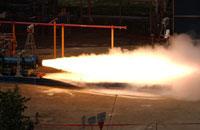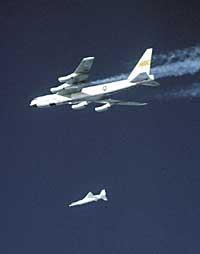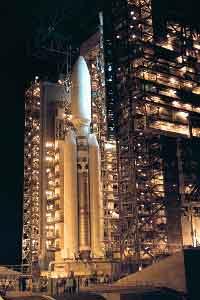NASA rockets will use kerosene
2002/08/06 Galarraga Aiestaran, Ana - Elhuyar Zientzia
Kerosene engines are not new to astronautics, as the F-1 rockets that sent the Apollo spacecraft to the Moon in 1969 used kerosene. Since then many engines and fuels have been tested, and this time they propose second generation engines. Although the fuel is the same as initially, major changes have occurred in the engines, which allows for higher fuel performance.
The new engine fulfills the stage combustion cycle and reuses part of the fuel and oxidant used in the first phase in the combustion chamber. This increases fuel performance.

On the other hand, to achieve higher performance, the fuel burns at a higher temperature. The size of the combustion chamber is also smaller. As a result, greater propulsion force is obtained.
Other changes have been made to increase the efficiency of kerosene. Kerosene is a less effective hydrocarbon than hydrogen. As the engine temperature increases, the kerosene becomes viscous and adheres to the surface. In addition, when burning the kerosene, soot accumulates in the turbine blades. To avoid this it is necessary to avoid overheating of the kerosene, modifying the design of the tubes and nozzles.
Compared to hydrogen, kerosene is not cold and that is beneficial. The propulsion system does not require insulation, which reduces the cost of the engine. In addition, maintenance is very simple.
The biggest benefit of the new engine is, however, its reuse. F-1 engines, once used, are useless. Those of kerosene, on the other hand, could be used between 50 and 100 times. That, of course, greatly embraces missions.
However, at the moment there is only one prototype of new engines. We will have to wait a bit to know if they are successful or not.

Gai honi buruzko eduki gehiago
Elhuyarrek garatutako teknologia






